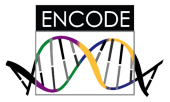Application of NanoString nCounter technology to the Validation of ChIP-Seq datasets in the ENCODE project.
Epstein CB, Goren A, Gymrek M, Ernst J, Shoresh N, Zhang X, Issner R,
Coyne M, Amit I, Regev A, Kellis M, Bernstein BE
The key platform characterization finding is that there is good
agreement between ChIP detection by NanoString nCounter technology and
high-throughput DNA sequencing. A custom NanoString codeset was devised
that samples many ENCODE chromatin states. For ChIP experiments using 14
different antibodies, there was generally high concordance between the
two detection methods. In addition, there was high concordance between
NanoString assay of ChIP and high-throughput DNA sequencing libraries
prepared from the same ChIP, for the 5 antibodies tested. These results
indicate that high-throughput DNA sequencing maintains a robust
representation of immunoprecipitated material.
Comparison of sequence-specific transcription factor determinations by ChIP-seq and ChIP-qPCR.
Gertz J, Reddy TE, Pauli F, and Myers RM
The key platform characterization finding is that there is good
agreement between ChIP-seq and ChIP-qPCR. For each of 12 transcription
factors, the enrichment of 44 binding sites was measured by qPCR. There
was a high concordance between enrichment results from qPCR and the
density of reads in ChIP-seq binding sites. These results indicate that
high-throughput DNA sequencing maintains a robust representation of
immunoprecipitated material.
Synthetic spike-in standards for RNA-seq experiments.
Jiang L, Schlesinger F, Davis CA, Zhang Y, Li R, Salit M, Gingeras TR, Oliver B.
Genome Res. 2011 Sep;21(9):1543-51. Epub 2011 Aug 4. PMID: 21816910; PMCID: PMC3166838
Key platform characterization finding is that over a wide range, there is a linear correlation
between signal (read density) and RNA concentration (input) in RNA-seq experiments. Another key
finding is excellent agreement between replicates. A pool of RNA standards (96 different RNAs,
various lengths and GC content) spanning a million fold concentration range was used in this determination.
Some bias was found with respect to GC content and fragment length; these biases were reproducible and protocol dependent.
ChIP-chip versus ChIP-seq: lessons for experimental design and data analysis.
Ho JW, Bishop E, Karchenko PV, Nègre N, White KP, Park PJ.
BMC Genomics. 2011 Feb 28;12:134. PMID: 21356108; PMCID: PMC3053263
Key platform characterization findings include ChIP-seq data are generally better than ChIP-chip
data with respect to signal-to-noise ratio, number of detected peaks and resolution. While there is
strong agreement between the two platforms, the peaks identified using these two platforms can be significantly
different, depending on the factor antibody and the analysis pipeline. Identification of binding regions is
dependent on the peak calling pipeline used, and more difficult for factors that are enriched in broad regions.
In addition, input DNA libraries used for ChIP-seq can vary, and high-quality input samples sequenced with
sufficient depth are important for accurate peak calling.
An assessment of histone-modification antibody quality.
Egelhofer TA, Minoda A, Klugman S, Lee K, Kolasinska-Zwierz P, Alekseyenko AA, Cheung MS, Day DS, Gadel S,
Gorchakov AA et al.
Nat Struct Mol Biol. 2011 Jan;18(1):91-3. Epub 2010 Dec 5. PMID: 21131980; PMCID: PMC3017233
Histone modification antibodies were characterized for specificity and
ChIP. More than 25% of the tested antibodies failed specificity tests
by dot blot or western blot. More than 20% of the antibodies that passed
the specificity test failed in ChIP experiments. A website was
developed for posting new results
(http://compbio.med.harvard.edu/antibodies/).
Systematic evaluation of variability in ChIP-chip experiments using predefined DNA targets.
Johnson DS, Li W, Gordon DB, Bhattacharjee A, Curry B, Ghosh J, Brizuela L, Carroll JS, Brown M, Flicek P et al.
Genome Res. 2008 Mar;18(3):393-403. Epub 2008 Feb 7.PMID: 18258921; PMCID: PMC2259103
A number of microarray platforms were tested using a spike-in positive control approach, and found to provide results that
were consistent with each other. Variance specific to microarray platform was similar or smaller than the variance associated with
laboratory, protocols and analysis pipeline. Sensitivity was good even at relatively low spike-in levels. Simple repeats and
segmental duplication caused false positive errors in peak detection.
 Platform Characterization
Platform Characterization